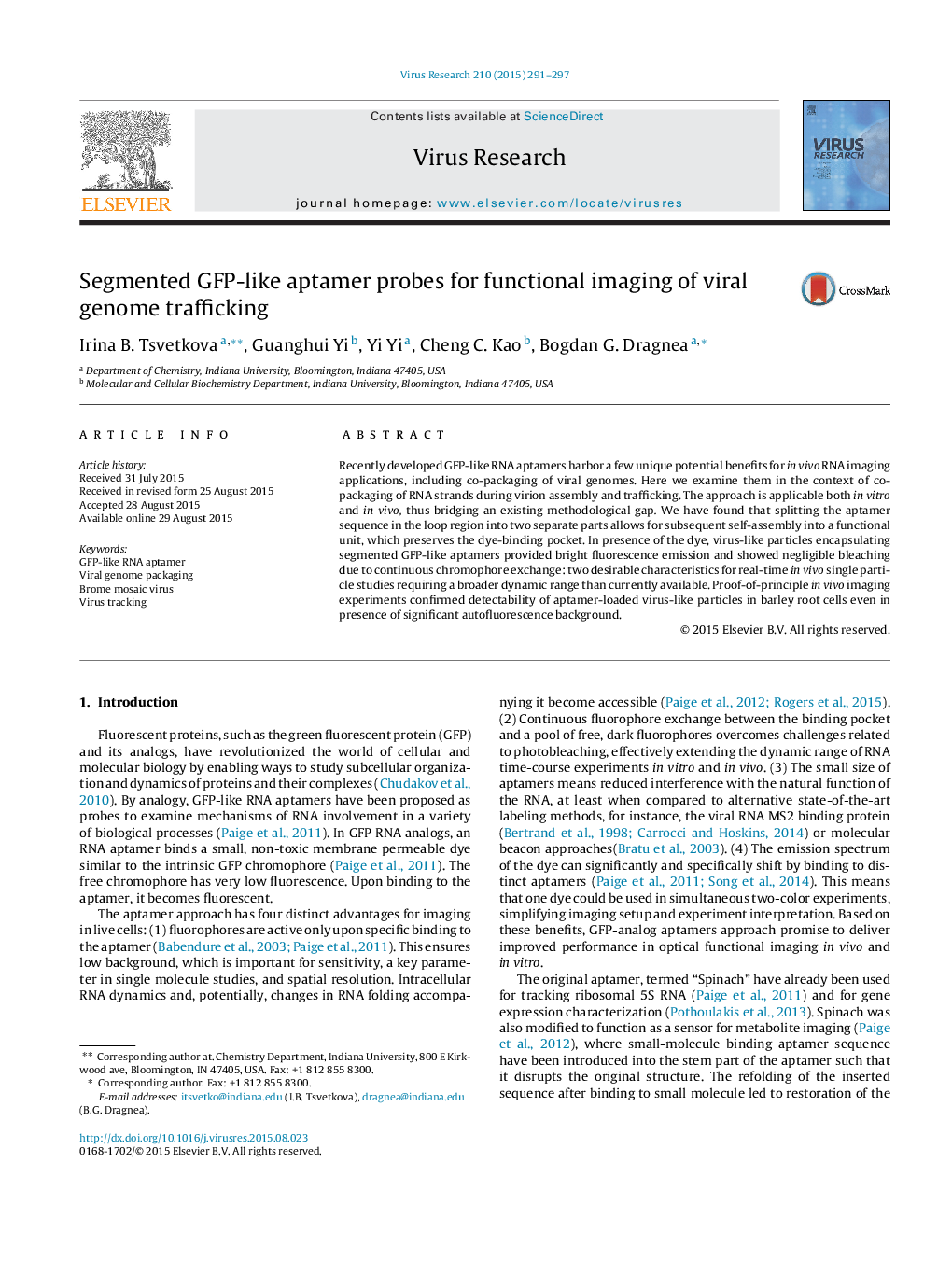| Article ID | Journal | Published Year | Pages | File Type |
|---|---|---|---|---|
| 3428072 | Virus Research | 2015 | 7 Pages |
•A segmented GFP-like aptamer was developed which is not fluorescent when its segments are separated, but after reconstitution has similar fluorescent properties with the full aptamer.•Segmented aptamers exhibited enhancement in fluorescence due to increased folding efficiency.•Segmented aptamers preserved their fluorescence properties upon association with coat protein and encapsulation inside a brome mosaic virus capsid.•Negligible bleaching from continuous chromophore exchange allowed for extended time single particle tracking.
Recently developed GFP-like RNA aptamers harbor a few unique potential benefits for in vivo RNA imaging applications, including co-packaging of viral genomes. Here we examine them in the context of co-packaging of RNA strands during virion assembly and trafficking. The approach is applicable both in vitro and in vivo, thus bridging an existing methodological gap. We have found that splitting the aptamer sequence in the loop region into two separate parts allows for subsequent self-assembly into a functional unit, which preserves the dye-binding pocket. In presence of the dye, virus-like particles encapsulating segmented GFP-like aptamers provided bright fluorescence emission and showed negligible bleaching due to continuous chromophore exchange: two desirable characteristics for real-time in vivo single particle studies requiring a broader dynamic range than currently available. Proof-of-principle in vivo imaging experiments confirmed detectability of aptamer-loaded virus-like particles in barley root cells even in presence of significant autofluorescence background.
